Description
Name in North American Boletes: Boletus pseudosulphureus and pseudosulphureus var. pallidus
Genus: Neoboletus
- Genus 2: Boletus
Species: pseudosulphureus
- Species 2: junquilleus
Common Name:
Tells: Bright yellow cap ages red/browner & bruises blue-black. Bright yellow flesh & pores blue quickly, w/pores resolving to brown. Stem flesh is dark red by the base, which blues faster.
Other Information: Cap flesh may have a greenish tint. Yellow stem bruises blue & then resolves to brown. Stem usually has no netting. Cap flesh may taste a little acidic or astringent. Likes oak & pine.
Science Notes: Nova scotia has a variety with a paler-than-usual cap color and flesh. This was considered a different species (var. pallidus in North American Boletes) but has since been shown to be a natural variation within the single species under the newly erected genus “Neoboletus.”
Edibility: Edible.
CHEMICAL TESTS:
- NH4OH (Ammonia): Cap skin has no reaction.
- KOH: Cap skin turns orange to reddish. Blue-stained cap flesh turns orange.
- FeSO4 (Iron Salts): Cap skin turns gray to grayish olive. Blue-stained cap flesh turns yellow.
Links:
 |
0 |  |
0 |  |
141
142 (var. pallidus) |
 |
279 |

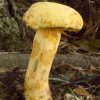
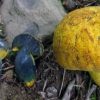
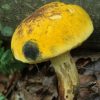
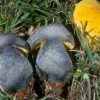
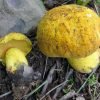
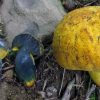
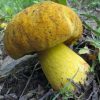
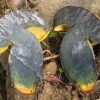
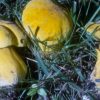
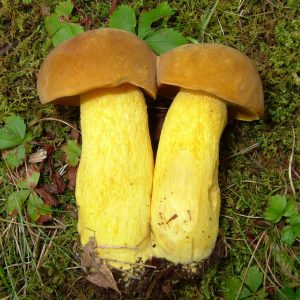
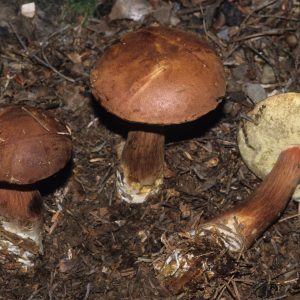

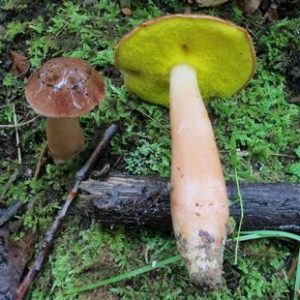
Got something to discuss?